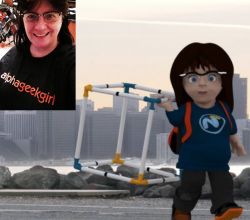| Description |
Regular textures like the ones shown above are adequate for most jobs, but occasionally you may want to mix it up a bit and create something a little more unique, yet still make it look organic. So for example, say I wanted to use the grass, rocks and sand above to create a random terrain image. Now, I could go into Photoshop and create a mashup of these three textures, but once I'm back in modo, if I had to cover an expansive area, I'd still have to contend with the tiling issue, and in the real-world, having tiled rocks and grass just doesn't cut it. That's where texture bombing comes in. Texture bombing is a procedural technique that helps reduce regular pattern artefacts. We do this by first placing a bunch of different textures into a Group, and then using modo's Texture Replicators, a small copy of one of the Group's images is randomly placed at each vertex across the mesh. From there you can further randomly scale, rotate, and blend the textures together to make the surface appear seamless and quite natural-looking. |
| Step-by-Step |
Apply texture
- Select your mesh, apply a material.
- With the material selected> Add Layer > Image Map > Load Image and bring in several different images. I'm using grass, rocks and sand.
Correct Gamma
- Selecting all the texture images at one, under > Properties > Texture Layers > Gamma, divide the gamma 1.0 by 2.2 = .4546

Increase Wrap
- Under > Properties > Texture Locator > Projection, increase both Horizontal & Vertical Wraps so that they appear tiled. Try 10 x 10 (but it really depends on the texture you are using)
Create Group of textures
- From the Shader Tree, select all the texture map images you want to use in your 'texture bomb'

- Go to the > Group tab > New Group, name your group and leave it as Standard

Replace current image with the Group
- Under > Properties > Texture Layers > Image, change it to the Group you just created
 Note: Make sure you have the Render Preview Window open, as texture replicators do not show up in the Open GL viewport.
Note: Make sure you have the Render Preview Window open, as texture replicators do not show up in the Open GL viewport.
Texture Replicator
- Under > Properties > Texture Locator > Texture Replicator > Particle Source, select the mesh item you wish to apply the image map to.
- Increase the Particle Size so that each image is almost touching
- Adjust the Falloff Bias and Gain so that the mess is totally and evenly covered.
- Adjust the Random Size, Rotation and Random Rotation as required.

And this is a quick and dirty random terrain texture created with the three images at the top of the page.

|










 0%
0%

















